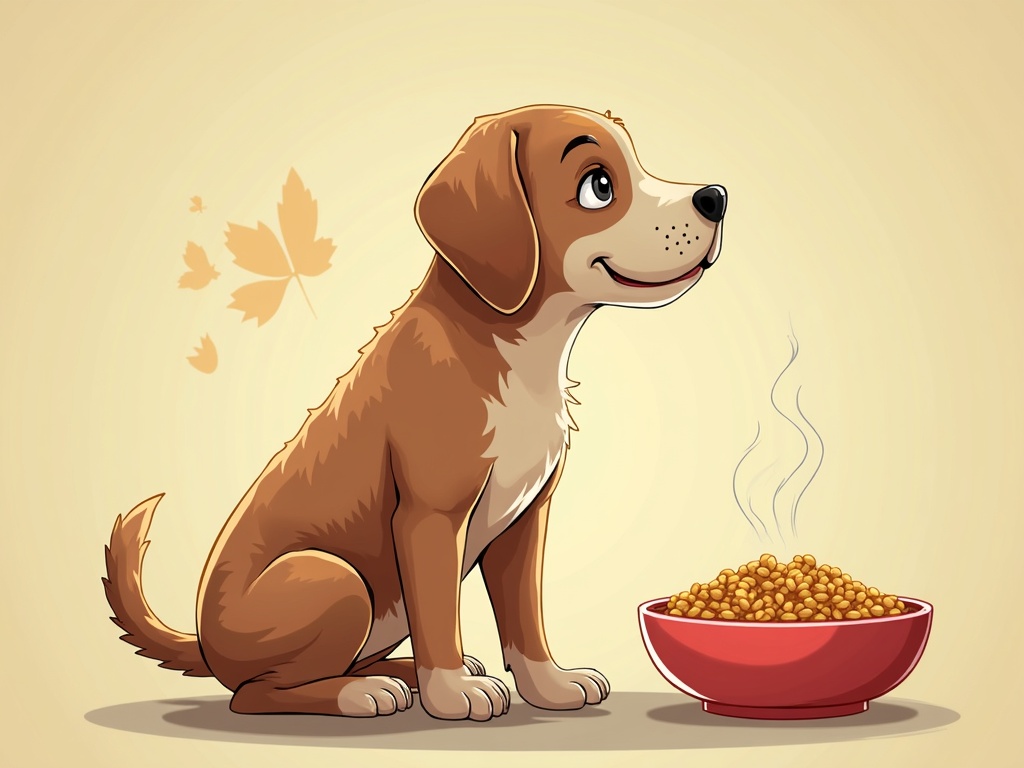Is Your Dog Allergic to Their Food? Spotting the Signs and Finding Relief
Imagine your beloved canine companion, usually a bundle of energy and joy, is now constantly scratching, has recurring ear infections, or is struggling with digestive issues. Could the culprit be lurking in their food bowl? Food allergies in dogs are more common than you might think, and recognizing the signs is the first step towards getting your furry friend the relief they deserve.
Understanding Food Allergies in Dogs
A food allergy is an immune response to a specific ingredient in your dog's food. The immune system mistakenly identifies a particular protein as a threat and triggers a cascade of reactions, leading to various uncomfortable and sometimes debilitating symptoms. Unlike food intolerance, which primarily involves the digestive system, a food allergy engages the entire immune system.
Common Food Allergens
While dogs can be allergic to almost any food, some ingredients are more frequently implicated than others. These include:
- Beef
- Dairy products
- Chicken
- Lamb
- Wheat
- Soy
- Corn
It's important to note that even high-quality, premium dog foods can contain these allergens. The key is identifying the specific trigger for your dog's allergy.
Key Signs Your Dog Has a Food Allergy
Recognizing the signs of a food allergy can be challenging, as they often mimic other conditions. However, certain symptoms are highly suggestive of a food-related issue.
Dermatological Symptoms
Skin problems are the most common manifestation of food allergies in dogs. Be on the lookout for:
- Excessive scratching, especially around the face, paws, ears, and groin.
- Red, inflamed skin, often accompanied by a rash or hives.
- Hair loss, particularly due to constant scratching and licking.
- Hot spots, which are localized areas of inflamed, infected skin.
- Chronic ear infections, often recurring despite treatment.
- Changes in skin pigmentation.
Gastrointestinal Symptoms
Digestive upset is another common sign of food allergies. Symptoms may include:
- Vomiting
- Diarrhea
- Increased gas
- Loss of appetite
- Weight loss
- Frequent bowel movements
Other Potential Signs
In some cases, food allergies can manifest in less obvious ways:
- Anal gland issues: Frequent scooting or licking the anal area.
- Respiratory problems: Coughing, sneezing, or wheezing (less common).
- Behavioral changes: Irritability or restlessness due to discomfort.
It's crucial to consult with your veterinarian if you observe any of these signs in your dog. They can help determine if a food allergy is the likely cause and recommend appropriate diagnostic and treatment strategies.
Diagnosing Food Allergies: The Elimination Diet
The gold standard for diagnosing food allergies in dogs is an elimination diet. This involves feeding your dog a novel protein and carbohydrate source that they have never eaten before. The idea is to reset their system and then gradually reintroduce ingredients to identify the culprit.
How an Elimination Diet Works
1. Choose a novel protein and carbohydrate: Work with your vet to select a food containing ingredients your dog has never been exposed to. Common choices include venison and potato, duck and pea, or rabbit and sweet potato. There are also hydrolyzed protein diets available, where the proteins are broken down into smaller pieces that are less likely to trigger an allergic reaction.
2. Strict adherence is key: For 8-12 weeks, your dog can only eat the elimination diet food. No treats, flavored medications, or table scraps are allowed, as even small amounts of the offending allergen can skew the results.
3. Monitor your dog's symptoms: Keep a detailed record of your dog's symptoms (or lack thereof) during the elimination diet. Note any improvements or relapses.
4. Reintroduction phase: After the elimination period, you'll start reintroducing previous food ingredients one at a time, every few days. Observe your dog closely for any adverse reactions, such as skin irritation, digestive upset, or other allergy symptoms. If a reaction occurs, you've likely identified a trigger ingredient.
5. Consult your veterinarian throughout the process: Vets can guide you and provide prescription diets (hydrolyzed diets) if needed
Challenges of the Elimination Diet
The elimination diet requires patience and commitment. It can be challenging to keep your dog on a strict diet for an extended period, especially if you have other pets in the household. Also, it's important to rule out other potential causes of your dog's symptoms, such as environmental allergies or parasitic infections, before starting the diet. In some cases, your veterinarian might suggest allergy testing – blood tests or intradermal skin tests – to help identify potential allergens. Keep in mind that allergy tests are not always reliable for diagnosing food allergies, and the elimination diet remains the most accurate method.
Managing Food Allergies: Beyond the Diet
Once you've identified the offending allergen, the most important step is to avoid it completely. This means carefully reading food labels and selecting dog foods that are free from the trigger ingredient.
Choosing the Right Dog Food
When selecting a dog food for a dog with food allergies, look for the following:
- Limited Ingredient Diets (LID): These diets contain a minimal number of ingredients, reducing the risk of exposure to allergens.
- Novel Protein Sources: Choose foods that feature protein sources your dog has never eaten before, such as fish, duck, venison, or rabbit.
- Grain-Free Formulas: While not all dogs with food allergies are sensitive to grains, some may benefit from grain-free diets.
- Hydrolyzed Protein Diets: These diets contain proteins that have been broken down into smaller pieces, making them less likely to trigger an allergic reaction. Your veterinarian can provide these.
- Read labels Carefully: Avoid foods that contain the identified allergen, even in small amounts.
Additional Strategies for Managing Food Allergies
In addition to dietary changes, several other strategies can help manage food allergies and alleviate your dog's symptoms:
- Omega-3 Fatty Acids: Supplementing with omega-3 fatty acids can help reduce inflammation and improve skin health.
- Antihistamines: In some cases, antihistamines can help relieve itching and other allergy symptoms. Consult your veterinarian to determine if antihistamines are appropriate for your dog.
- Topical Treatments: Medicated shampoos, creams, and sprays can help soothe irritated skin and prevent secondary infections.
- Probiotics: Probiotics can help improve gut health and boost the immune system, potentially reducing the severity of allergic reactions.
- Regular Veterinary Checkups: Regular checkups with your veterinarian are essential for monitoring your dog's condition and adjusting the treatment plan as needed.
Living with a Dog with Food Allergies
Managing food allergies in dogs can be an ongoing process. It requires careful attention to your dog's diet, diligent monitoring of their symptoms, and regular communication with your veterinarian. However, with proper management, dogs with food allergies can live happy, healthy lives. Remember to be patient and persistent in identifying the trigger allergen and finding the right dietary and treatment plan for your furry friend. Your dedication will make a world of difference in their quality of life.


